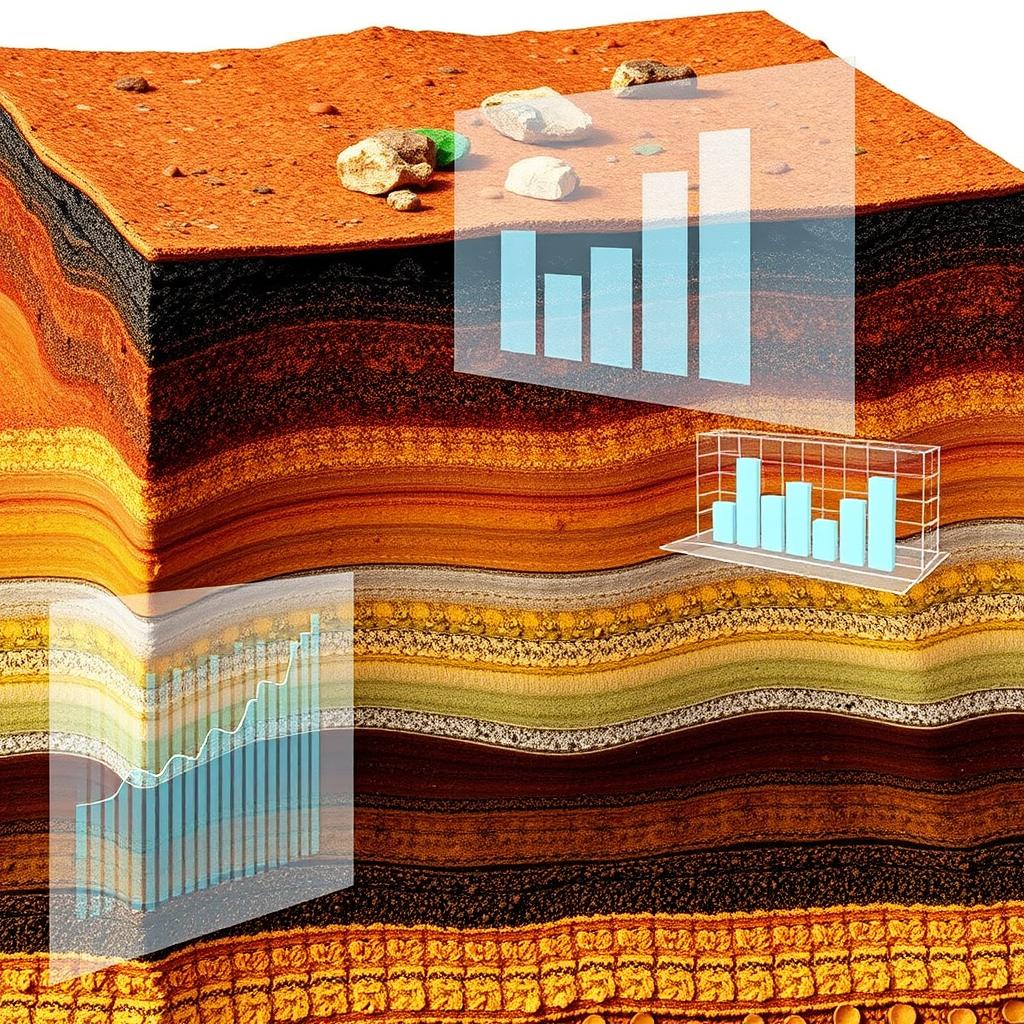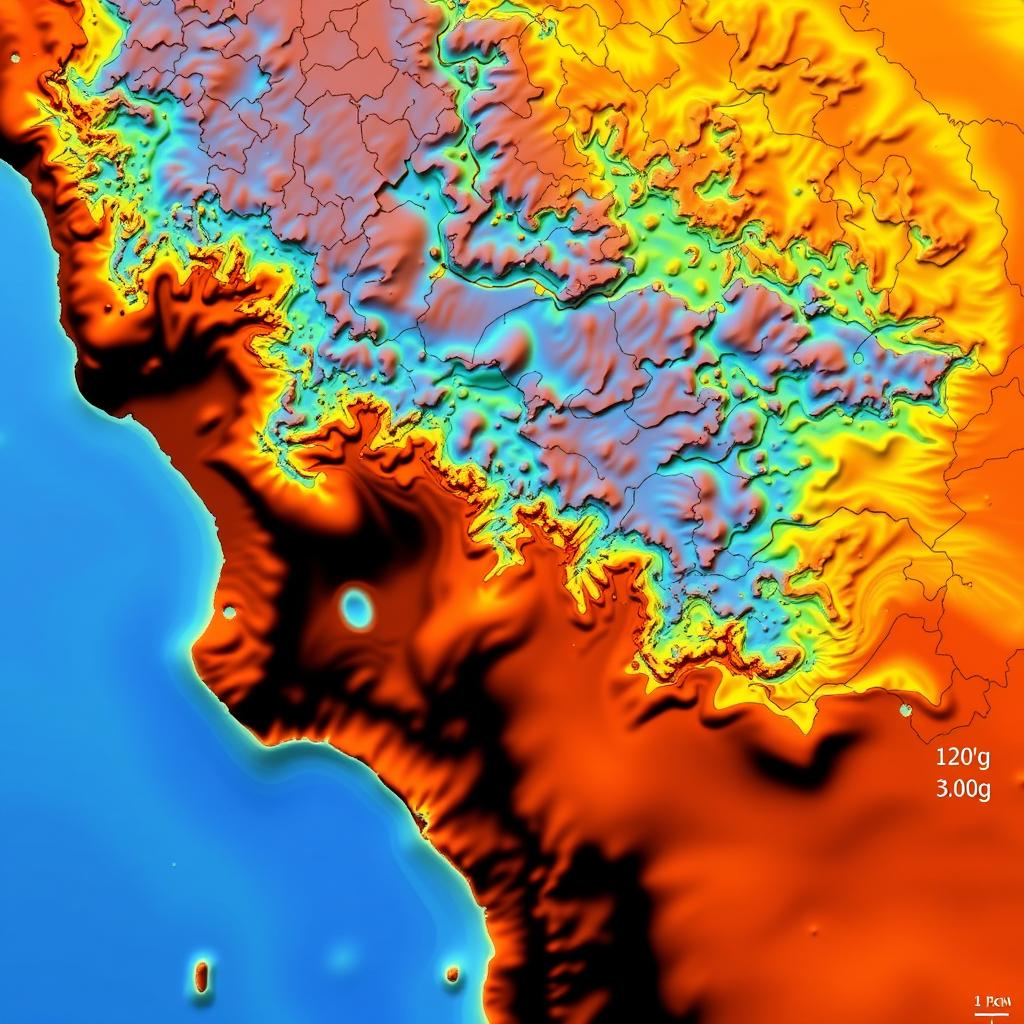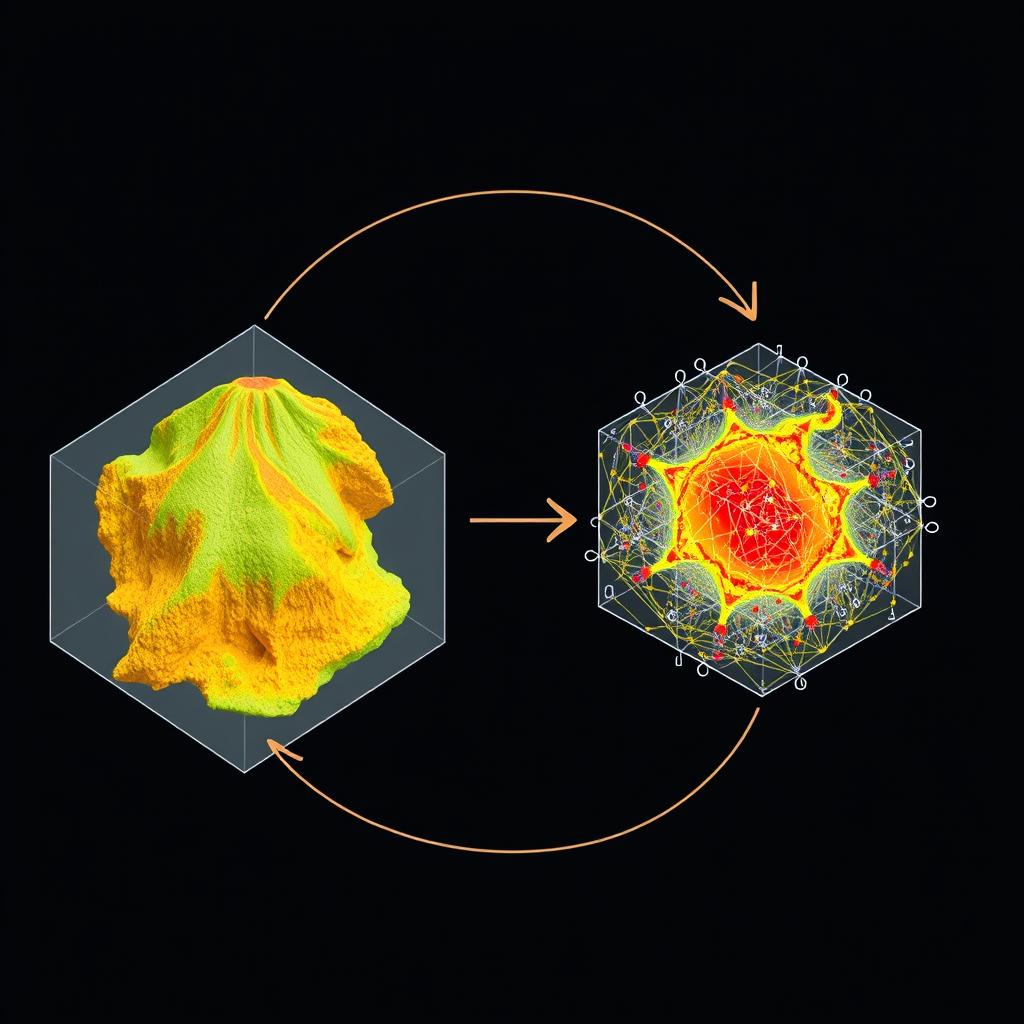Introduction
The goal of geology as a science is to comprehend the composition, structure, and dynamic processes that form the Earth’s subsurface habitats. Since these subsurface conditions have a direct impact on crucial processes like resource extraction, infrastructure development, and environmental management, it is extremely important to precisely predict and simulate these conditions. The intricacy and fluctuation seen in geological formations, however, pose formidable obstacles. This is where statistical analysis as a field comes in handy.
The Earth’s subsurface is a complicated, frequently unreachable area with characteristics that change significantly across time and space. Numerous causes, including sedimentation processes, tectonic activity, and geological history, could be the cause of these variances. The difficulty for geologists and engineers is creating models that can consider these variances and offer precise forecasts. Statistical Analysis provides an effective toolbox to address this problem. Scientists can assess uncertainties, identify patterns, and make well-informed forecasts regarding subsurface conditions by using statistical methods on geological data.
Geologists can convert unprocessed data into insightful knowledge by using statistical analysis. The underlying structure of subterranean formations can be obscured by noise and discrepancies in data obtained from seismic surveys, boreholes, and remote sensing techniques. These data can be more precisely evaluated by applying statistical techniques like regression analysis, hypothesis testing, and geostatistics. This interpretation involves more than simply trend identification; it also entails building reliable models capable of simulating the behavior of subsurface conditions under different settings.
Beyond just interpreting data, statistical analysis is crucial in geology. Additionally, it is essential to the verification and improvement of geological simulations. Geological simulations are complex models that mimic underground Earth conditions to forecast future behaviors or states. The location of mineral resources can be predicted using these simulations, and they can also be used to evaluate the stability of the ground before beginning construction. The quality of the statistical models that these simulations are built on has a significant impact on their dependability.
We shall examine the different ways that Geological Simulation is supported by Statistical Analysis in this post. We will look at the basic statistical techniques applied in geology, analyze the difficulties caused by spatial variability and uncertainty, and talk about how the combination of machine learning and data analytics is improving the predictive capacity of geological models. We will demonstrate through this investigation how Statistical Analysis advances more accurate predictions and more efficient decision-making in a variety of geological applications, while also advancing our understanding of the Earth’s subsurface.
The importance of statistical analysis is only going to increase as geology develops further. To fully utilize geological data, one must be able to apply advanced statistical approaches, as vast and complicated datasets are becoming more and more accessible. Better strategies for reducing environmental risks, more realistic simulations, and more effective resource management will result from this. Understanding the fundamentals of statistical analysis is essential for progressing our knowledge of the Earth’s buried depths and for decision-makers, engineers, and scientists to make the best choices feasible when faced with geological uncertainty.

1. The Role of Statistical Analysis in Geological Data Interpretation
Statistical Analysis is the cornerstone of data interpretation in geology. Geological data, often collected from sources like seismic surveys, boreholes, and remote sensing, is inherently variable. Descriptive Statistics help in summarizing this data, providing a clear understanding of central tendencies, dispersion, and patterns within the dataset.
For instance, Variability Analysis is critical in geological studies, where the properties of materials such as porosity, permeability, and mineral content can vary significantly across different locations. By using Inferential Statistics, geologists can make inferences about these properties across wider areas, beyond the locations where data was directly collected.
2. Spatial Variability and Geostatistics
One of the major challenges in geology is the spatial variability of subsurface properties. This is where Geostatistics, a branch of Statistical Analysis, becomes essential. Geostatistics involves the application of statistical methods to spatial data, helping to model and predict the spatial distribution of geological variables.
Spatial Interpolation techniques, such as kriging, are commonly used to estimate values at unsampled locations. Correlation Coefficients are calculated to understand the relationships between different geological variables, which can significantly impact the accuracy of Geological Simulations. For example, understanding the correlation between porosity and permeability is crucial in reservoir modeling.

3. Uncertainty Quantification in Geological Simulations
Uncertainty is an inherent aspect of geological studies due to the limited data available and the complex nature of geological formations. Statistical Analysis provides tools for Uncertainty Quantification, allowing geologists to assess the reliability of their models and predictions.
Probability Distributions are used to model the uncertainty in geological data, providing a range of possible outcomes rather than a single deterministic prediction. Confidence Intervals and Hypothesis Testing further help in assessing the statistical significance of the results obtained from geological models. By quantifying uncertainty, Geological Simulations can offer more realistic predictions, which are crucial for decision-making in fields like oil and gas exploration, mining, and environmental management.

4. Integrating Data Analytics with Geological Simulations
The integration of Data Analytics with Statistical Analysis enhances the capability of Geological Simulations. Big Data technologies enable the processing and analysis of large geological datasets, improving the accuracy and depth of simulations.
Machine Learning algorithms, a key component of Data Analytics, are increasingly being used to identify patterns in geological data that might not be evident through traditional Statistical Analysis. These algorithms can enhance Predictive Modeling by learning from vast datasets and improving the predictive accuracy of geological simulations.

For example, Time Series Analysis can be applied to historical geological data to predict future changes in subsurface conditions, while Bayesian Inference methods can continuously update geological models as new data becomes available. This integration not only improves the precision of Geological Simulations but also accelerates the decision-making process by providing more timely insights.
5. Applications in Resource Estimation and Environmental Monitoring
The applications of Statistical Analysis in Geological Simulation are vast. In resource estimation, Regression Analysis is commonly used to predict the size and location of mineral deposits based on exploratory data. ANOVA (Analysis of Variance) helps in comparing different geological scenarios to identify the most likely outcomes.
In environmental monitoring, Statistical Analysis is used to assess the risks of geological hazards such as earthquakes, landslides, and subsidence. By integrating data from various sources and applying Statistical Significance tests, geologists can develop more accurate models for predicting and mitigating these risks.

Conclusion
Statistical analysis is the foundation that supports all other aspects of Geological Simulation; it is much more than just a tool. Within the intricate and frequently erratic field of geology, where subterranean conditions pose a multitude of difficulties, statistical analysis offers the rigorous approaches required to decipher data, model variability, and evaluate uncertainty. It enables geologists and data analysts to confidently traverse these complexities, resulting in more precise subsurface condition projections and, ultimately, more knowledgeable and useful decision-making.
The capacity of statistical analysis to model geographical variability using geostatistics is one of its main advantages. Rarely are geological formations uniform, and even minor distances can cause drastic changes in their attributes. Geologists and data analysts can produce models that faithfully capture these changes by using geostatistical techniques, which will result in more accurate subsurface simulations. Moreover, a realistic evaluation of the degree of confidence that can be placed in these models is made possible by the quantification of uncertainty, which is another essential component of statistical analysis. This is crucial for decision-making processes since it’s just as critical to comprehend the spectrum of potential outcomes as it is to identify the most likely one.
In the subject of geology, the combination of data analytics and statistical analysis is quickly changing the game. The ability to process and evaluate geological data quickly is crucial since the volume of data keeps increasing due to technological developments and expanded data collection activities. With the aid of data analytics technologies, data analysts are essential to this process since they make it possible to handle enormous and complicated information. As a result, patterns and insights that would be impossible to find using only conventional methods can now be found. More precise and dependable geological simulations can be produced by continuously enhancing geological models through the use of machine learning algorithms and other data analytics approaches.
Gaining proficiency in statistical analysis and data analytics is now mandatory for all geologists, data analysts, engineers, and decision-makers working in the field. These abilities are essential for making the most informed and precise decisions possible based on geological data and for realizing the full potential of this data. With the power of Data Analytics and sophisticated statistical tools at their disposal, experts will be better equipped to tackle the problems associated with geological uncertainty.
The importance of data analytics, data analysis, and statistical analysis in geology is only going to grow in the future. Geological data is becoming more complicated, and the need for environmental protection and sustainable resource management is expanding. These factors call for ever-more complex methods of data interpretation and simulation. Geologists and data analysts will be better able to create novel answers to the urgent problems facing our planet, from resource exploitation to the reduction of natural hazards, by combining these disciplines.
In conclusion, a new era of geological simulation is being driven by the synergy of statistical analysis, data analytics, and the knowledge of data analysts. The capacity to use these potent instruments will be critical for experts in this field to make the best choices possible, open up fresh doors for research and development, and, in the end, make previously unthinkable advances in our understanding of the Earth’s subsurface.


